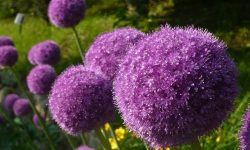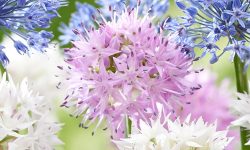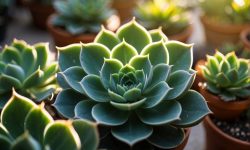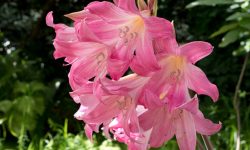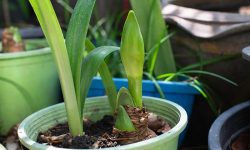There’s something timeless and enchanting about honeysuckle vines. Their trumpet-shaped flowers burst with color, and their sweet, nostalgic fragrance fills summer air like a memory you didn’t know you had. Whether trailing along a fence or cascading over an arbor, honeysuckle adds romance, height, and irresistible charm to any garden space.
Beyond their beauty and scent, honeysuckle vines are also wonderfully rewarding to grow. With just a little care, they produce long-lasting blooms and attract hummingbirds, butterflies, and bees in abundance. If you’ve ever dreamed of cultivating a garden filled with stunning flowers and intoxicating perfume, learning how to grow honeysuckle is the perfect place to begin.
Understanding Honeysuckle Varieties
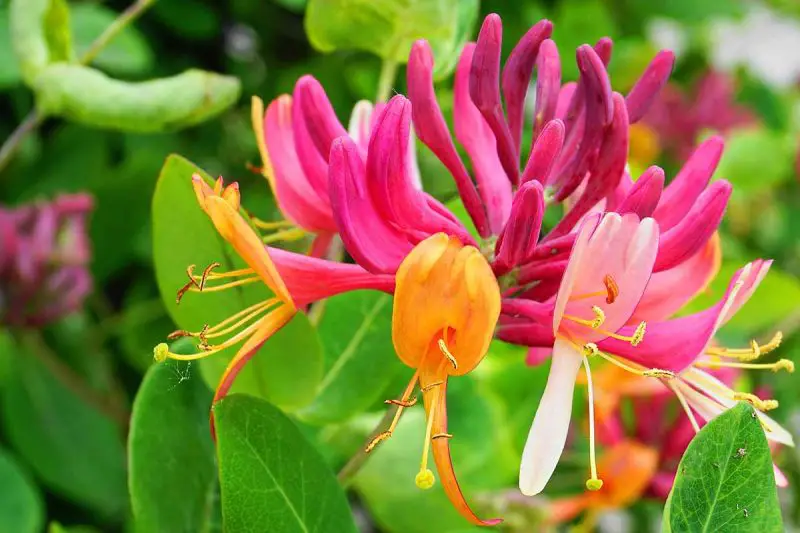
Honeysuckle plants belong to the genus Lonicera and include over 180 species, ranging from vigorous climbers to compact shrubs. Understanding the different types of honeysuckle is key to choosing the right one for your garden and ensuring optimal growth and flowering.
Climbing honeysuckles, such as Lonicera japonica and Lonicera periclymenum, are among the most popular. These varieties are known for their ability to cover trellises, fences, and arbors quickly, producing an abundance of sweetly scented flowers in late spring through summer. Their blossoms come in shades of white, yellow, pink, or red, attracting hummingbirds and pollinators to your garden.
Shrubby honeysuckles like Lonicera tatarica or Lonicera xylosteum offer a different aesthetic. These species grow more like traditional shrubs, making them ideal for hedges or background plantings. While some varieties still produce fragrant blooms, many are grown for their attractive foliage and berries that provide food for birds.
There are also evergreen honeysuckle types, such as Lonicera henryi, which provide year-round greenery in milder climates. These are perfect for gardeners who want continuous coverage without sacrificing seasonal interest. Their semi-evergreen or evergreen foliage pairs well with subtle but fragrant flowers.
When selecting a honeysuckle variety, consider your climate, the plant’s growth habit, and the space you can offer. Some species are cold-hardy and thrive in USDA zones 4–9, while others prefer warmer environments. Checking these details ensures you pick a honeysuckle that thrives with minimal effort while delivering maximum beauty and fragrance.
Choosing the Right Spot in Your Garden
Honeysuckle thrives in full sun to partial shade, but for the best flower production and fragrance, full sun is ideal. Choose a location that gets at least six hours of direct sunlight daily. While honeysuckle tolerates some shade, it may produce fewer blooms and develop leggier growth when sunlight is limited.
The planting site should also have good air circulation. Avoid crowded areas where the plant may remain damp for long periods, as this increases the risk of mildew or other fungal diseases. Honeysuckles are climbers, so a nearby support structure like a trellis or fence is essential to help them reach their full potential.
Preparing the Soil for Healthy Roots
Selecting the best location for your honeysuckle is key to healthy growth and maximum blooming. Honeysuckles thrive in areas that receive full sun to partial shade. Aim for at least six hours of direct sunlight per day to encourage abundant flowering.
Good air circulation is also important to reduce the risk of mildew and pests. Choose a spot that is open yet protected from harsh winds. Honeysuckle vines love to climb, so planting them near a fence, trellis, or arbor gives them the support they need to grow upward.
Soil conditions matter as well. Ensure the area has well-drained soil with moderate moisture retention. Avoid waterlogged locations, as excess moisture can lead to root rot. With the right spot, honeysuckle will reward you with vigorous growth and beautiful, fragrant blooms season after season.
Planting Honeysuckle Vines Step by Step
Planting honeysuckle vines properly sets the foundation for healthy growth and an abundance of sweetly scented blooms. Begin by preparing the planting site. Ensure the soil is well-drained and enriched with organic compost. Loosen the soil to a depth of at least 12 inches to help the roots establish easily. Spring or early fall is the best time to plant, giving the vine time to root before extreme weather.
Dig a hole that is twice as wide as the plant’s root ball and just as deep. Carefully remove the honeysuckle vine from its container, gently loosening any tangled roots. Place the plant in the hole so the top of the root ball is level with the surrounding soil. Fill the hole with the excavated soil, firming it gently around the base of the plant.
After planting, water the vine thoroughly to help settle the soil around the roots. Apply a layer of mulch around the base to retain moisture and suppress weeds, keeping the mulch a few inches away from the stem to prevent rot. If you are planting more than one vine, space them at least 2 to 3 feet apart to allow room for growth.
Install a sturdy support structure such as a trellis, fence, or arbor immediately after planting. Honeysuckle vines are natural climbers and need guidance to grow upward. Tie the young stems loosely to the support to encourage upward growth as they establish.
With the right planting process, honeysuckle vines will quickly begin to thrive, rewarding you with vigorous growth and sweet, fragrant blooms season after season.
Providing Support for Climbing Growth
Honeysuckle vines are natural climbers and need strong structures to grow upright and flourish. Without support, they tend to sprawl or grow unevenly, which can limit airflow and flower production. Giving them something to climb not only enhances their appearance but also encourages healthier growth.
Install a trellis, arbor, fence, or pergola near your planting site to guide the vines. Choose a support that matches the eventual size of the honeysuckle, as mature vines can grow quite large and heavy. Make sure the structure is sturdy enough to handle the plant’s weight over time.
As the vines begin to grow, gently train them toward the support. Use garden twine or soft ties to loosely attach the stems, helping them find the best path upward. Regularly checking their progress ensures the plant climbs evenly and fills the support structure with foliage and flowers.
A well-supported honeysuckle not only looks more beautiful but also stays healthier by improving air circulation and exposure to sunlight. This setup results in more blooms and a stronger, more manageable vine throughout the growing season.
Watering for Optimal Growth
Proper watering is essential for healthy honeysuckle vines and abundant blooms. During the first growing season, keep the soil evenly moist to help the plant establish strong roots. Deep watering once or twice a week is often better than frequent shallow watering, as it encourages roots to grow deeper and become more drought-tolerant over time.
Once established, honeysuckle is relatively drought-resistant, but regular watering during dry spells will keep it blooming profusely. Always check the soil before watering. If the top inch feels dry, it’s time to water. Avoid letting the soil become soggy, as this can lead to root rot and other moisture-related issues.
In hot climates or during extended periods without rain, mulch can help retain moisture and regulate soil temperature. Apply mulch around the base of the plant, leaving space near the stem to prevent rot. Consistent watering, especially during summer, ensures lush foliage and a continuous display of fragrant flowers.
Feeding for Lush Blooms
To encourage honeysuckle vines to produce abundant flowers, proper feeding is essential. Honeysuckles benefit from a balanced fertilizer applied in early spring, just as new growth begins. A formula with equal parts nitrogen, phosphorus, and potassium supports both leafy growth and prolific blooms.
During the growing season, an additional feeding every four to six weeks can help maintain vigorous flowering, especially in nutrient-poor soils. Slow-release or organic options like compost and well-rotted manure also improve soil health over time and support long-term plant vitality.
Avoid overfeeding with high-nitrogen fertilizers, as they can promote excessive leaf growth at the expense of flowers. Always water the plant before and after feeding to prevent root burn and to help nutrients reach the root zone efficiently.
Consistent, moderate feeding ensures that your honeysuckle remains healthy, produces vibrant blossoms, and continues to thrive throughout the growing season.
Pruning for Shape and Flower Production
Pruning keeps honeysuckle vines looking neat and ensures steady bloom production. Prune in late winter or early spring before new growth begins. Remove dead, damaged, or tangled stems, and shape the vine by cutting back long or unruly branches.
For mature vines that have grown too large or become woody, perform a hard prune every few years to rejuvenate growth. Trim back to about one-third of the plant’s size. This may reduce flowering in the short term, but it encourages more vigorous blooming in the long run.
Regular pruning also prevents invasive behavior in aggressive varieties like Japanese honeysuckle. Keep the vine within bounds and avoid letting it sprawl unchecked over native plants or structures.
Managing Pests and Diseases
Honeysuckle vines are generally hardy, but they can still face issues from common garden pests and diseases. Regular monitoring is key to keeping your plants healthy and vibrant. Aphids, spider mites, and whiteflies are among the most frequent insect pests. These tiny insects suck sap from leaves and stems, leading to stunted growth, curled foliage, and in some cases, the spread of disease. If infestations are mild, spraying the plant with water or using insecticidal soap can help control the problem. For heavier infestations, neem oil or horticultural oils provide a natural, effective solution.
Powdery mildew is a common fungal disease that can affect honeysuckle, especially in humid or poorly ventilated areas. This disease appears as a white, powdery coating on the leaves and can reduce the plant’s vigor. To prevent mildew, ensure good air circulation by spacing plants appropriately and pruning back dense growth. Watering at the base of the plant rather than overhead can also help keep foliage dry.
Leaf blight and sooty mold can also pose occasional threats. Blight may cause brown spots or dying foliage, while sooty mold often develops on honeydew excreted by sap-sucking insects like aphids. Managing the insect population usually reduces the risk of sooty mold.
To maintain strong, disease-resistant honeysuckle, remove and dispose of any infected leaves, prune regularly to encourage airflow, and keep the planting area clean of fallen debris. Healthy plants with proper care and nutrition are far more capable of withstanding pest and disease pressure.
Encouraging More Blooms Throughout the Season
To keep honeysuckle blooming continuously, regular deadheading is essential. Removing spent flowers directs the plant’s energy toward producing new buds instead of seeds. This simple task can significantly extend the blooming period, especially during peak growing months.
Light pruning after each flush of flowers also encourages new growth and more blooms. Trimming back overly long or leggy stems helps maintain shape and stimulate branching, which leads to more flowering tips. Avoid heavy pruning during the blooming season, as this may reduce the number of blossoms.
Consistent watering and balanced feeding throughout the season further support flower production. During dry spells, keeping the soil evenly moist prevents stress that can limit blooming. Using a fertilizer rich in phosphorus promotes bud development and longer-lasting flowers.
Placing the plant in an area with adequate sunlight also impacts blooming success. Most honeysuckles perform best with at least six hours of sun per day. If the plant is in too much shade, moving it or selectively pruning nearby vegetation can improve flower output.
Overwintering Honeysuckle in Cold Climates
While many honeysuckle varieties are hardy, some types are more sensitive to frost. In zones where winter temperatures dip below freezing, add extra mulch around the base of the plant in late fall. This protects the roots from cold damage.
For container-grown honeysuckle, move pots to a sheltered location like a garage or unheated greenhouse. Water sparingly through winter to keep the roots from drying out completely, but avoid overwatering, which can lead to rot.
In spring, remove mulch and inspect for any winter dieback. Prune away damaged stems and resume regular care as the growing season begins.
Propagating Honeysuckle for More Beauty
Propagating honeysuckle is a rewarding way to multiply your favorite varieties and expand their presence in the garden. The most common and effective method is taking softwood cuttings in late spring or early summer. Choose healthy, non-flowering shoots, cut just below a leaf node, and remove the lower leaves. Dip the end in rooting hormone and place it in moist, well-draining potting mix.
Keep the cuttings in a warm, humid environment, away from direct sunlight. Within a few weeks, roots should begin to develop. Once the new plants are well-rooted, they can be transplanted into larger pots or directly into the garden.
Layering is another reliable method. Bend a flexible stem to the ground, cover a portion with soil, and wait for it to root naturally while still attached to the parent plant. Once roots form, cut the new plant free and move it to its new home.
By propagating honeysuckle, gardeners can create a lush, fragrant landscape filled with multiple vines, all while preserving the beauty of their favorite cultivars.
Companion Plants for Honeysuckle
Pairing honeysuckle with the right companion plants enhances both beauty and garden health. Honeysuckle vines, with their vigorous growth and sweet-scented blooms, benefit from being planted alongside species that complement their needs and visual appeal.
Choose companion plants that thrive in similar conditions—sun-loving, tolerant of well-drained soil, and able to coexist with climbing or trailing growth. For example, clematis makes a striking partner as it can twine through the honeysuckle without overwhelming it, offering contrasting flower shapes and colors. Meanwhile, shrubs like butterfly bush or spirea provide structure and attract pollinators that also visit honeysuckle.
Groundcover plants such as creeping thyme or sweet woodruff help retain soil moisture and suppress weeds around the base of honeysuckle vines. Ornamental grasses like fountain grass or blue fescue can also add texture and fill in lower garden layers without competing aggressively.
By carefully selecting companion plants, you can create a dynamic, multi-layered garden where honeysuckle thrives, blooms abundantly, and supports biodiversity throughout the growing season.
FAQ About Growing Honeysuckle
What is the best time of year to plant honeysuckle?
The ideal time to plant honeysuckle is during the early spring or fall when temperatures are cooler and rainfall is more abundant. Planting in spring gives the vine a full growing season to establish its roots, while fall planting allows it to settle in before winter. Avoid planting during the peak heat of summer to reduce transplant shock and stress.
How much sunlight does honeysuckle need?
Most honeysuckle varieties thrive in full sun, which means at least six hours of direct sunlight each day. However, they can also tolerate partial shade, especially in hot climates. For optimal blooming and healthy growth, choose a location with morning sun and some afternoon shade if your summers are particularly intense.
How often should I water my honeysuckle?
Newly planted honeysuckle vines should be watered regularly to keep the soil consistently moist but not soggy. Once established, they are fairly drought-tolerant and only need watering during extended dry periods. In general, aim to water deeply once or twice a week, depending on rainfall and soil type.
Does honeysuckle need to be pruned?
Yes, pruning is essential for maintaining shape, encouraging more blooms, and preventing the plant from becoming too woody or overgrown. Prune after the main flowering period, usually in late summer or early fall. Remove dead or weak stems and cut back overgrown branches to promote vigorous new growth in the following season.
Can honeysuckle be grown in containers?
Yes, many honeysuckle varieties can be grown in large containers, especially dwarf or compact types. Choose a pot with good drainage and use a high-quality potting mix. Provide a sturdy trellis or support, and make sure to water and fertilize more frequently than in-ground plants, as container-grown honeysuckle dries out faster.
Conclusion: Enjoying Honeysuckle Year After Year
Growing honeysuckle vines offers more than just a beautiful display of flowers. With their sweet scent and ability to attract pollinators, they bring life and charm to any garden. By understanding the plant’s needs and following careful planting, pruning, and care techniques, gardeners can enjoy a healthy, fragrant honeysuckle vine for years.
From choosing the right variety to providing proper support and regular maintenance, every step you take ensures success. The reward is a garden filled with stunning blooms and the sweet aroma that makes honeysuckle a timeless favorite in gardens across the world.

